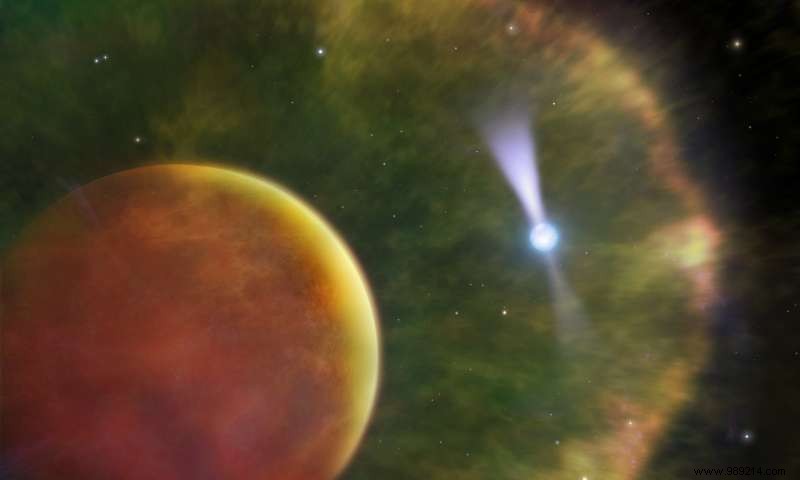In the journal Nature, a team of astronomers details the discovery of a mysterious twinkling object spewing huge amounts of energy towards Earth three times an hour . This eerily powerful body located about 4,000 light-years from the Sun is unlike any other known structure.
Astronomers have a new cosmic mystery to solve. Just 4,000 light-years from Earth, a strange object emits powerful low-frequency waves for about 30-60 seconds every 18.18 minutes . The object in question, named GLEAM-X J162759.5-523504.3 (GLEAM for short), appeared during a recent radio survey of the Milky Way.
Such structures, which suddenly appear and disappear in front of our telescopes, are said to be "transient". They come in two varieties. "Slow Transients can appear in a few days before disappearing after several months. These objects include supernovae. Then there are the "fast transients that flash every few milliseconds. They are most commonly pulsars, neutron stars only ten to thirty kilometers in diameter with enormous magnetic fields that accumulate matter and regularly "pulse" large amounts of X-rays and other energetic particles. .
However, none of these standard explanations match the behavior of this new body. According to data from the Murchison Widefield Array (MWA) radio telescope, Australia, Australian, the "on-off flicker" of this object is indeed too fast to be a supernova , but also too slow to be a pulsar .

An analysis of the object showed it to be incredibly bright, but smaller than Earth's Sun. GLEAM's radio emissions were also highly polarized (meaning their light waves only vibrate in one plane), suggesting that they were generated by an extremely strong magnetic field strong> .
"No one expected to directly detect one like this because we didn't expect them to be so bright “, points out Natasha Hurley-Walker, radio astronomer at Curtin University in Bentley, Australia. "Somehow it converts magnetic energy into radio waves much more efficiently than anything we've seen before . »
These characteristics could possibly correspond to a type of theoretical object known as an "ultra long period magnetar". It is a highly magnetized neutron star that spins incredibly slowly. This class of objects has never been observed in space before . So this may be a first. It is also possible that GLEAM represents another type of object never theorized until now.
Further observations in other bands of the electromagnetic spectrum are needed to solve this stellar mystery. Now that GLEAM has been detected, researchers are also digging through MWA archival sightings to see if similar objects have appeared before.